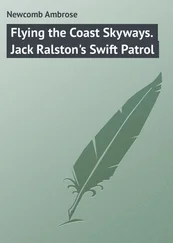Ian Hepburn - Flowers of the Coast
Здесь есть возможность читать онлайн «Ian Hepburn - Flowers of the Coast» — ознакомительный отрывок электронной книги совершенно бесплатно, а после прочтения отрывка купить полную версию. В некоторых случаях можно слушать аудио, скачать через торрент в формате fb2 и присутствует краткое содержание. Жанр: unrecognised, на английском языке. Описание произведения, (предисловие) а так же отзывы посетителей доступны на портале библиотеки ЛибКат.
- Название:Flowers of the Coast
- Автор:
- Жанр:
- Год:неизвестен
- ISBN:нет данных
- Рейтинг книги:4 / 5. Голосов: 1
-
Избранное:Добавить в избранное
- Отзывы:
-
Ваша оценка:
- 80
- 1
- 2
- 3
- 4
- 5
Flowers of the Coast: краткое содержание, описание и аннотация
Предлагаем к чтению аннотацию, описание, краткое содержание или предисловие (зависит от того, что написал сам автор книги «Flowers of the Coast»). Если вы не нашли необходимую информацию о книге — напишите в комментариях, мы постараемся отыскать её.
Flowers of the Coast — читать онлайн ознакомительный отрывок
Ниже представлен текст книги, разбитый по страницам. Система сохранения места последней прочитанной страницы, позволяет с удобством читать онлайн бесплатно книгу «Flowers of the Coast», без необходимости каждый раз заново искать на чём Вы остановились. Поставьте закладку, и сможете в любой момент перейти на страницу, на которой закончили чтение.
Интервал:
Закладка:
Occasionally the function of the leaf is taken over by specially modified branches known as “cladodes.” The only coastal plant exhibiting this modification is the wild asparagus (Asparagus prostratus), a rare plant found on sandy shores in a few localities only in this country. If the familiar feathery foliage of the garden asparagus is examined, it will be seen to consist of tufts of short leaf-like branches arising from the axils of minute scaly leaves ( Fig. 7). It is difficult to see exactly what advantage a plant can gain from the substitution of a leaf-like stem for an ordinary leaf—possibly the tissue of the cladode is more resistant to shrinkage when the plant is suffering from a shortage of water.

FIG. 6.—Different forms adopted by thrift: a. Rosette form under grazing or in dry ground; b. More diffuse habit when protected from grazing and with a good water-supply (from Tansley after Yapp, 1917).
FIG. 7.—Part of a branch of asparagus, showing cladodes and scale-leaves (s).
Quite apart from these permanent alterations in leaf-form, the shape and size of the leaves of many common plants vary greatly with the conditions under which they grow. For example, the first leaves of the red-fruited dandelion (Taraxacum laevigatum) , when growing in a moist hollow among sand-dunes, are often quite entire (i.e. with smooth edges); later in the season, when the sand has become dry, it produces the more familiar deeply divided leaves with a much smaller surface-area ( Fig. 8). Most of the common inland plants found on sand-dunes possess smaller leaves than when they grow on more hospitable ground. Nor must we forget that the semi-prostrate form so frequently adopted by dune-plants is still another method by which excessive transpiration can be reduced, since every extra inch in height exposes the plant more to the desiccating action of the strong winds.
FIG. 8.—Different leaf-forms of the red-fruited dandelion: a. Young leaf from a plant growing with abundant moisture. b. Leaf from a plant growing on dry sand.
It will be clear from what has been said that many plants are capable of modifying their normal form when growing in dry habitats. Of the various transpiration-checks which have been described, undoubtedly the development of a thick cuticle is the most frequent one employed by coastal plants. It possesses an added importance for plants inhabiting open sand-dunes in that it also protects them from possible injury caused by the sand being blown against them. Anyone who has done any botanising on exposed sand-dunes during a high wind will know how violent this bombardment can be!
It is important to point out, before we leave this subject, that it is only during periods of water-shortage that these mechanisms for reducing transpiration become important. Recent research has shown that xerophytes transpire during wet spells at least as much as, and often more than, ordinary plants. In those cases where the transpiration-rate becomes unusually high, it may be related to the necessity for rapid growth and carbon assimilation during the infrequent wet periods. What really characterises a xerophyte is that it can, if need be, decrease its transpiration-rate to a minimum when living under drought conditions. In addition, the actual protoplasm (living matter) seems able to withstand desiccation to an unusual extent.
SUCCULENCE
Some xerophytes employ quite a different method to provide against water shortage, though it is often found in combination with the leaf-modifications already described. It will be noticed that many plants growing in dry places have a fleshy or succulent appearance. This is due to the development of large colourless cells, known collectively as “aqueous tissue,” which are employed for storing water. This is usually confined to the leaves as in the stonecrops (Sedum spp.) ( Pl. 14) or the sea-spurge (Euphorbia paralias) ( Pl. XIX), but sometimes the whole stem is succulent as in the glassworts (Salicornia spp.) ( Fig. 9 (b) ) or the familiar Cacti, the leaves in these cases being reduced to mere scales or spines. As a rule these cells occupy the centre of the leaf or stem, and the green cells which are used for photosynthesis occur nearer the edges. In dry weather, as water is gradually lost by transpiration or by its passage into the green cells, the water-holding cells shrink; when the water-supply improves, they expand once more. They function, in fact, as water-storage cisterns for use by the plant in times of drought. Desert succulents, which often possess extremely thick cuticles to reduce transpiration, can exist for prolonged periods without an external supply of water, during which they gradually shrivel until they can replace their internal water supplies when the rain comes.
It is rather surprising that halophytes should form the largest class of plants exhibiting succulence in this country. It has already been pointed out that the chief characteristics of this group are that they can exert sufficiently large osmotic pressures to withdraw water from a soil which is saturated with sea-water, and that the protoplasm forming their cells is not injured by exposure to salt solutions. Under normal conditions, therefore, they should not encounter much trouble with their water-supplies, and it is difficult to understand why they should develop aqueous tissue so extensively. It is possible that they draw on their internal reserves of water when the concentration of salt in the soil alters too rapidly for them to accommodate their osmotic pressure to it, but this can hardly account for such a widespread characteristic. Furthermore, it has been shown that halophytes do not, in fact, withstand drought like succulent xerophytes, but actually wither quite rapidly.
The most likely explanation is that the similarity in appearance of succulent xerophytes and halophytes is largely accidental. There is considerable evidence to suggest that the latter become succulent as a result of some chemical effect associated with salt, probably with the chlorine rather than the sodium part of it (salt is a simple compound between these two elements). All plants when growing in a saline soil absorb some salt, for the cell-walls of the root-hairs never function as “perfect” semipermeable membranes, but allow a certain amount of the dissolved substances to pass through them. This is, of course, true of all types of plant, for otherwise they would be unable to obtain the small quantities of other mineral salts essential to their growth. Many halophytes, however, absorb very large amounts of common salt; the ash of some of them, like the glassworts, was formerly used on a large scale to provide soda for glass-making, and certain plants, as for example thrift, actually excrete surplus salt from the glands on their leaves. That the development of succulent leaves is closely connected with the absorption of salt is borne out by the behaviour of many non-halophytes when they grow in places exposed to sea-water. Many inland plants found on open beaches or on cliffs within reach of sea-spray possess much more fleshy leaves than they have in their normal habitats; bird’s-foot trefoil (Lotus corniculatus) , kidney vetch (Anthyllis vulneraria) and the greater knapweed (Centaurea scabiosa) are species which often show this effect. Some years ago I analysed the ash of certain inland plants which had been exposed to sea-spray in this way and found 13.5 per cent of salt in that of the kidney vetch. Evidence such as this points strongly to the conclusion that some chemical action connected with salt is the primary cause of succulence in halophytes, and there seems little reason to associate it with the problem of conserving water. The similarity between succulent xerophytes and halophytes is remarkable and we must leave it at that.
Читать дальшеИнтервал:
Закладка:
Похожие книги на «Flowers of the Coast»
Представляем Вашему вниманию похожие книги на «Flowers of the Coast» списком для выбора. Мы отобрали схожую по названию и смыслу литературу в надежде предоставить читателям больше вариантов отыскать новые, интересные, ещё непрочитанные произведения.
Обсуждение, отзывы о книге «Flowers of the Coast» и просто собственные мнения читателей. Оставьте ваши комментарии, напишите, что Вы думаете о произведении, его смысле или главных героях. Укажите что конкретно понравилось, а что нет, и почему Вы так считаете.












